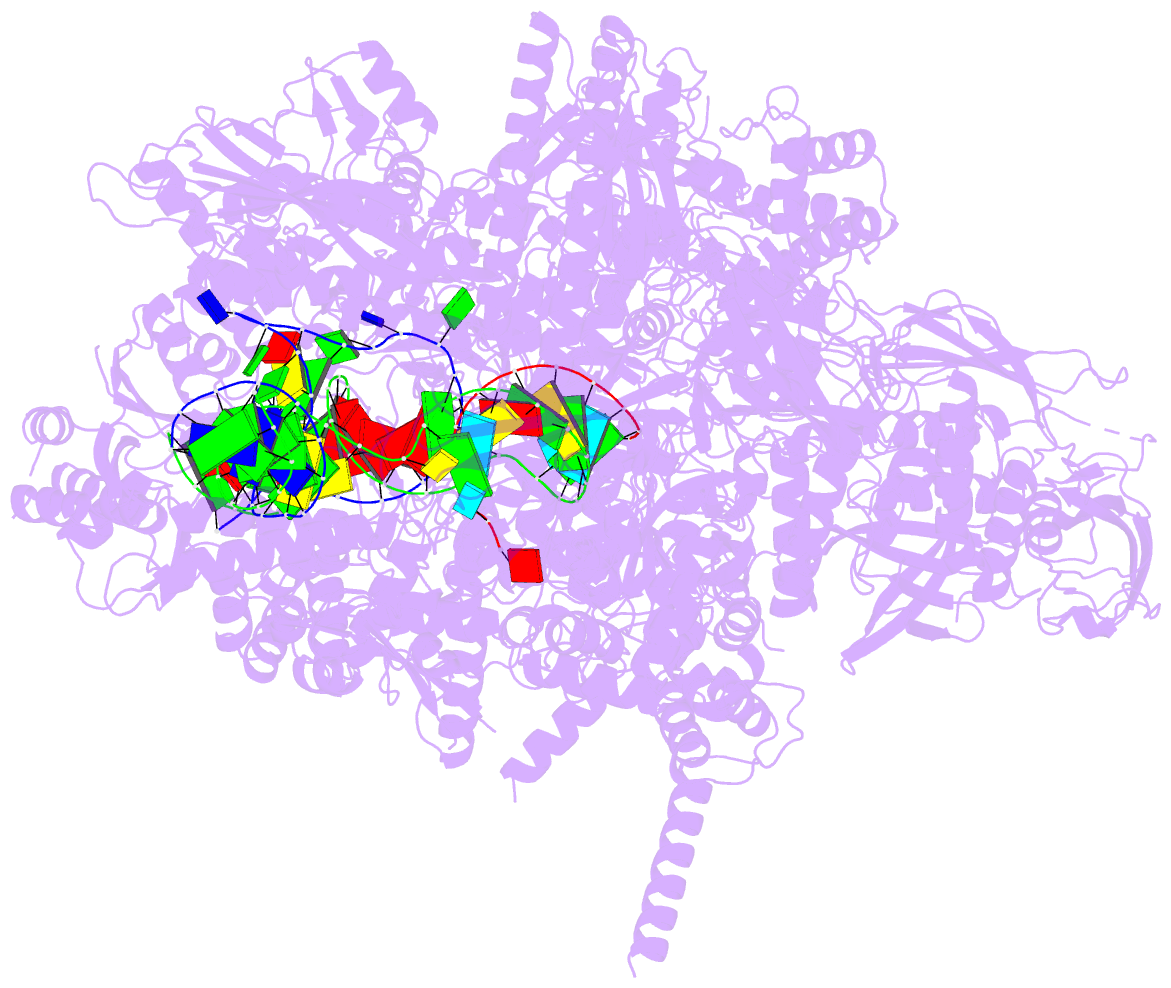Summary information and primary citation
- PDB-id
-
8pfg;
SNAP-derived features in text and
JSON formats
- Class
- transcription
- Method
- cryo-EM (3.1 Å)
- Summary
- Autoinhibited rfah bound to e. coli transcription
complex paused at ops site (encounter complex), not fully
complementary scaffold
- Reference
-
Zuber PK, Said N, Hilal T, Wang B, Loll B,
Gonzalez-Higueras J, Ramirez-Sarmiento CA, Belogurov GA,
Artsimovitch I, Wahl MC, Knauer SH (2024): "Concerted
transformation of a hyper-paused transcription complex
and its reinforcing protein." Nat Commun,
15, 3040. doi: 10.1038/s41467-024-47368-4.
- Abstract
- RfaH, a paralog of the universally conserved NusG,
binds to RNA polymerases (RNAP) and ribosomes to activate
expression of virulence genes. In free, autoinhibited RfaH,
an α-helical KOW domain sequesters the RNAP-binding site.
Upon recruitment to RNAP paused at an ops site, KOW is
released and refolds into a β-barrel, which binds the
ribosome. Here, we report structures of ops-paused
transcription elongation complexes alone and bound to the
autoinhibited and activated RfaH, which reveal swiveled,
pre-translocated pause states stabilized by an ops hairpin
in the non-template DNA. Autoinhibited RfaH binds and
twists the ops hairpin, expanding the RNA:DNA hybrid to 11
base pairs and triggering the KOW release. Once activated,
RfaH hyper-stabilizes the pause, which thus requires
anti-backtracking factors for escape. Our results suggest
that the entire RfaH cycle is solely determined by the ops
and RfaH sequences and provide insights into mechanisms of
recruitment and metamorphosis of NusG homologs across all
life.





